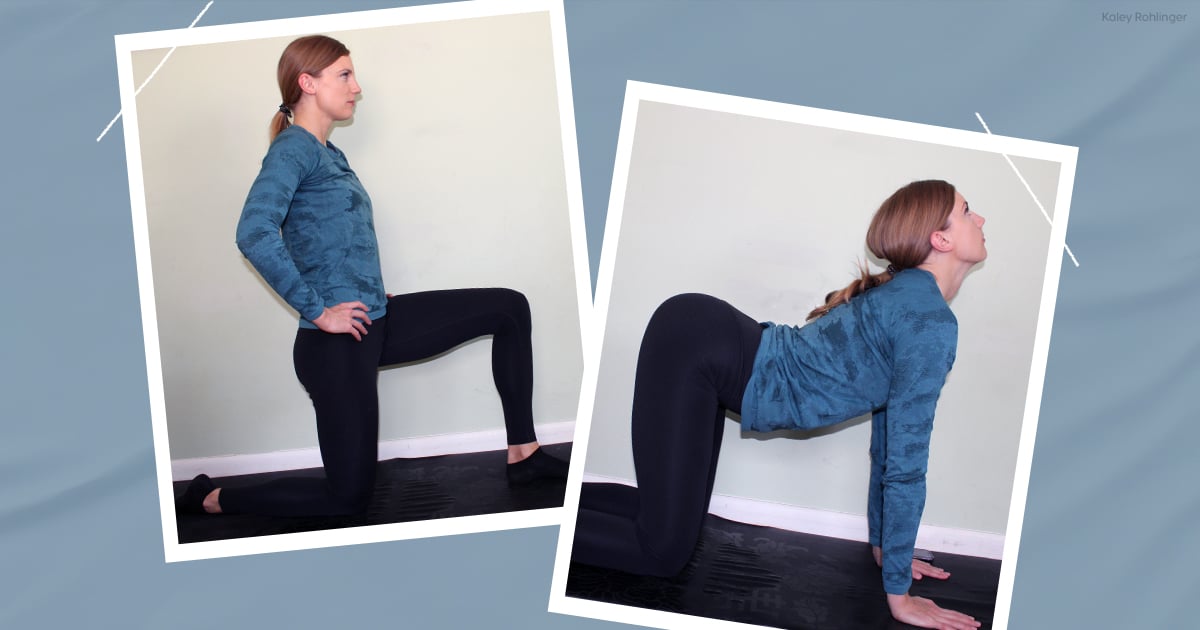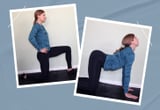With so many ways to exercise, and so many things to focus your workouts on (leg day, fixing back pain, stronger arms, etc.), mobility is easy to overlook when planning your workouts. However, it’s key for your overall health, fitness, and movement – particularly when it comes to your hips.
“If your body was a house, the hips and pelvic girdle would be the foundation,” says Grace Taylor, PT, DPT. “Without a strong, proper foundation, the rest of the house collapses.” Strong hips reduce stress and strain on other joints in your body, ensure proper alignment and posture, and improve your body awareness. When someone lacks mobility in their hips, they have to find that missing movement or function in other areas of their body, which leads to undue stress on the body. That’s why hip mobility exercises are so important.
Araceli de Leon, MS, RYT 500, ACE-PT echoes this sentiment. Mobility of any joint is important because our kinetic chain is connected, and one misalignment or issue will be compensated by another, de Leon explains. Restricted or decreased range of motion can lead to imbalances in the body, in the hip, it can lead to a change in walking or running pattern, posture, issues in the lower back/lumbar spine or legs, or higher risk factors for injuries. “Healthy hip mobility isn’t just important for athletes and active people; it’s crucial for everyday life,” de Leon tells PS.
Causes of Poor Hip Mobility
Tightness in the hip joint can come from reduced muscle length or muscle tightness surrounding the joint, reduced strength and stability, or injury to passive structures that provide joint stability and appropriate positioning, says Grace.
The muscles in our hip area work together to give the hip proper joint mobility. However, when a few of those muscles are doing most of the work, the other muscles might become underactive, weak, lengthened, and tight, says de Leon. On the same note, overactive muscles become shortened and tight. Thus, poor hip mobility is generally a result of an imbalance in the muscles working in the hip region. These imbalances can happen from too much sitting or standing, working conditions like favoring carrying loads on one side of the body, or ignoring proper warm up and cool down in your workout routines.
One thing to note is that reduced hip mobility doesn’t always mean you have tight hip muscles, says de Leon. Often, the issue is partnered with weak or underutilized hip muscles. Even if you lift weights frequently, some people forget about strengthening the smaller, underactive muscles of the hips, like the gluteus medius, tensor fascia lata, or adductor muscles. Another way to improve hip mobility is to include exercises that strengthen these smaller stabilizer muscles, not just the gluteus maximus.
How Fast Can You Increase Hip Mobility?
The most important determinant in improving hip mobility is consistency, says de Leon. The key is to focus on a program that works for your schedule, lifestyle and goals, and is safe for your body. Generally, with a consistent routine, you’ll start to notice some changes after 3-4 weeks of consistent stretching and mobility; and more substantial changes after 8-12 weeks, says Taylor.
Best Hip Mobility Exercises
To avoid or unlock tight hips, Taylor recommends moving frequently, avoiding prolonged positions like sitting, stretching your hips three times a week, and strengthening your hip, both the large musculature such as the hip flexor and glutes, as well as stability muscles. Ahead, we had de Leon and Taylor for their favorite hip mobility exercises to get you started.




